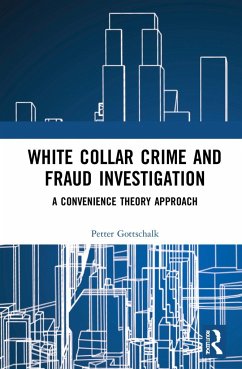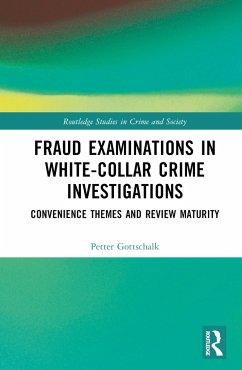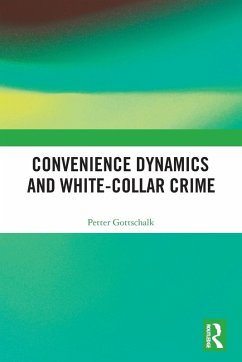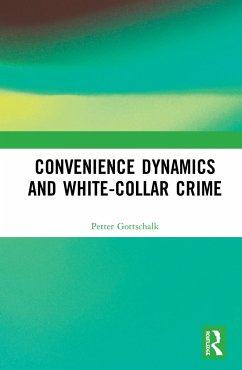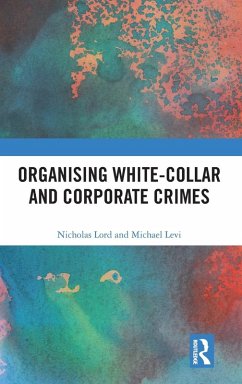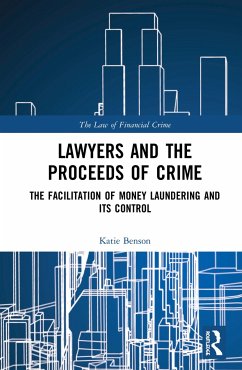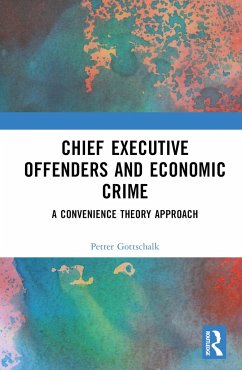White-Collar Crime
An Opportunity Perspective
Versandkostenfrei!
Versandfertig in 1-2 Wochen
Weitere Ausgaben:

PAYBACK Punkte
94 °P sammeln!




White-Collar Crime: An Opportunity Perspective analyzes white-collar crime using the opportunity perspective, which assumes that all crimes depend on offenders recognizing an opportunity to commit an offense.
Michael L. Benson is Professor Emeritus and Senior Research Associate in the School of Criminal Justice at the University of Cincinnati. He has published extensively on white-collar and corporate crime in leading journals, including Criminology, Justice Quarterly, Journal of Research in Crime and Delinquency, American Sociological Review, American Journal of Sociology, and Social Problems. He is a Fellow of the American Society of Criminology and a former President of its Division of White-Collar and Corporate Crime. In 2017, he was awarded the Division's Gilbert Geis Lifetime Achievement Award. He received the Outstanding Scholarship Award from the Society for the Study of Social Problems Division on Crime and Delinquency for his book, Combating Corporate Crime: Local Prosecutors at Work. In 2016, he co-edited The Oxford Handbook on White-Collar Crime with Shanna R. Van Slyke and Francis T. Cullen. A recent publication is "Race, Ethnicity, and Social Change: The Democratization of Middle-Class Crime," with Ben Feldmeyer, Shaun Gabbidon, and Hei Lam Chio, Criminology, 2021, 59:10-41. His research has been funded by the National Institute of Justice, the Centers for Disease Control, and private research foundations. Sally S. Simpson is Distinguished University Professor Emerita of Criminology and Criminal Justice at the University of Maryland, College Park and past Director of the Center for the Study of Business Ethics, Regulation and Crime (C-BERC). Her areas of expertise include white-collar/corporate crime, criminological theory, and gender, crime, and justice. Simpson is Past President (2020) of the American Society of Criminology (ASC) and Vice-Chair of the Committee on Law and Justice, National Academy of Sciences, Engineering, Medicine. She is an ASC Fellow and 2018 recipient of the ASC Edwin H. Sutherland Award. Recent publications include "Perceptions of White-Collar Crime Seriousness: Unpacking and Translating Attitudes into Policy Preferences", in JRCD, Sally S. Simpson, Miranda A. Galvin, Thomas A. Loughran, and Mark A. Cohen (https://doi.org/10.1177/00224278221092094, 2022) and "Unpacking the Criminogenic Aspects of Stress over the Life Course: The Joint Effects of Proximal Strain and Childhood Abuse on Violence and Substance Use in a High-Risk Sample of Women", in JRCD, Lee Slocum, Jennifer Medel, Elaine Doherty, and Sally S. Simpson (https://doi.org/10.1177/00224278211068188, 2022). Melissa Rorie received her Ph.D. in Criminology and Criminal Justice from the University of Maryland, College Park in 2013. She taught in the Department of Criminal Justice at the University of Las Vegas from 2013 to 2022. She is currently a Senior Research Manager at the OMNI Institute, a non-profit social science consultancy organization. Jay P. Kennedy received his Ph.D. from the University of Cincinnati School of Criminal Justice in 2014. He taught at Michigan State University in the School of Criminal Justice and was Assistant Director of Research at the Center for Anti-Counterfeiting and Product Protection. He is currently Global Lead for Amazon's Customer Trust External Relations Anti-Counterfeiting team.
Produktdetails
- Verlag: Routledge
- 4. Auflage
- Seitenzahl: 256
- Erscheinungstermin: 22. Januar 2024
- Englisch
- Abmessung: 260mm x 183mm x 18mm
- Gewicht: 683g
- ISBN-13: 9781032007199
- ISBN-10: 1032007192
- Artikelnr.: 68713214
Herstellerkennzeichnung
Libri GmbH
Europaallee 1
36244 Bad Hersfeld
gpsr@libri.de
Für dieses Produkt wurde noch keine Bewertung abgegeben. Wir würden uns sehr freuen, wenn du die erste Bewertung schreibst!
Eine Bewertung schreiben
Eine Bewertung schreiben
Andere Kunden interessierten sich für





